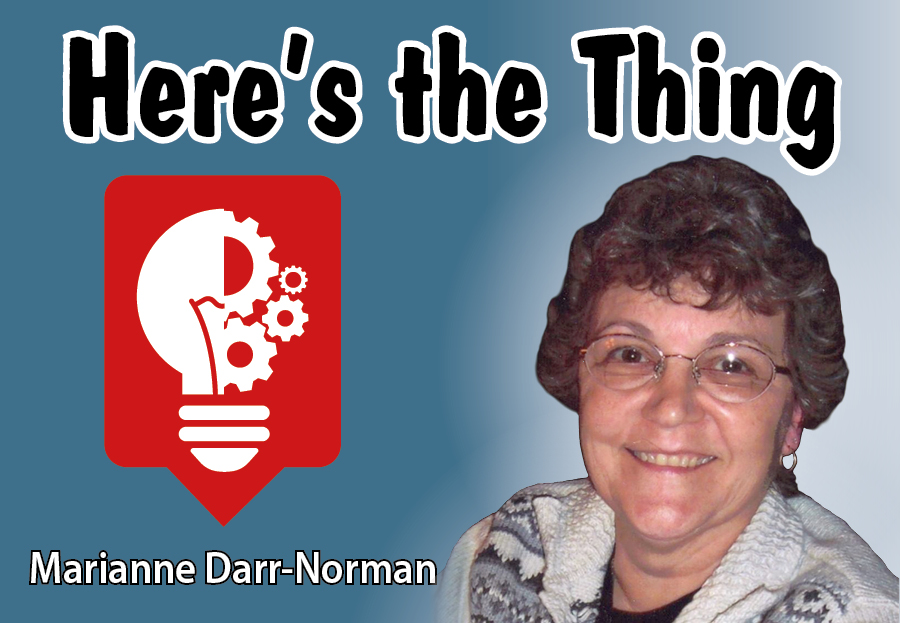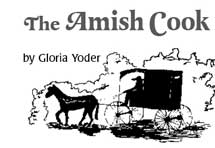
In a recent letter to the editor published in another area newspaper, the writer had this to say: “Living for more than eight decades gives one a unique perspective on the many changes that have taken place over the years.”
Something about that paragraph hit me squarely over the head. Perhaps because I have recently taken stock of the fact that I soon have a birthday to celebrate, I began to list the things I’ve seen in my seven decades.
September 1939: World War II began with the Nazi invasion of Poland. I wasn’t born yet, but I arrived during the six years of this war
December 1941: Japan perpetrated a surprise aerial attack on the U.S. naval base at Pearl Harbor. The strike climaxed worsening relations between the United States and Japan. The next day President Franklin Delano Roosevelt officially declared war on Japan and life changed for my extended family.
May 1944: Dad enlisted in the Navy on 12 May 1944; he had previously tried to join the Army but his eyesight kept him home. I was just 17 months old when he packed his duffel bag and left for boot camp. He wanted to serve on a mine sweeper; once again, he was rejected because of his eyes. The Navy assigned him to be a storekeeper in Norfolk, Va. When he was settled, he sent for Mom, my brother, and me to join him. (I played on the beach at Norfolk oblivious to a war!)
August 1945: The United States detonated two atomic bombs over the Japanese cities of Hiroshima and Nagasaki on Aug. 6 and 9, respectively. The two bombings killed between 129,000 and 226,000 people, most of whom were civilians, and remain the only use of nuclear weapons in armed conflict.
January 1947: The first public use of a microwave was in a Speedy Weeny vending machine in Grand Central Terminal which sold freshly cooked hot dogs. The first commercially available microwave oven also appeared in 1947. Made by Raytheon and called Radarange, it was nearly 6 feet in height and weighed 749 pounds. Microwaves have revolutionized access to hot snacks.
March 1947: The Cold War was a period of political tension between the United States and the Soviet Union and their respective allies which began after World War II and lasted until 1991. The term “cold war” is used because there was no large-scale fighting directly between the two superpowers.
June 1948: The first regularly broadcast TV show was a visual version of the popular radio series “Texaco Star Theatre.” It began TV broadcasts June 8. By this time, there were nearly 200,000 television sets in America. My step-grandfather must have had one of those but all I ever saw at his house was boxing. (Interestingly, Philo Farnsworth developed a television system complete with receiver and camera — which he produced commercially through the Farnsworth Television and Radio Corporation from 1938 to 1951 in Fort Wayne.) We got our first TV in 1952. In the early days, many programs we watched were just 15 minutes in length, and if we stayed up late enough, we could see the TV stations sign off the air.
November 1952: Republican Dwight D. Eisenhower won a landslide victory for the presidency over Democrat Adlai Stevenson II. This was the first presidential election I was aware of because he was lauded at our family gatherings by the veterans of the war and their spouses and talked about by the kids on the playground. During World War II, he served as Supreme Commander of the Allied Expeditionary Force in Europe. He retained his enormous popularity from the war, and his campaign slogan “I Like Ike” was on the tongues of many.
November 1955: President Eisenhower deployed the Military Assistance Advisory Group to train the Army of the Republic of Vietnam. This marks the official beginning of American involvement in the Vietnam War.
September 1956: Elvis Presley performed on the Ed Sullivan Show on Sept. 9, much to the consternation of many. With 60 million viewers tuning in, it became the most-watched TV broadcast of the 1950s. Many adults were appalled at Elvis’s gyrations and forbade their children from watching, but my parents watched with us.
November 1960: John Fitzgerald Kennedy’s campaign was the first presidential election I followed; I wasn’t old enough to vote, but I was old enough to care. We gathered in a dorm room and listened to the election returns. On Nov. 8, he was elected the 35th President of the United States. The public was skeptical of his Catholicism because many feared the Pope would run America.
1960s: The Internet got its start in the 1960s as a way for government researchers to share information. Computers were large and immobile.
October 1962: The Cuban Missile Crisis began Oct. 14, 1962, bringing the United States and the Soviet Union to the brink of nuclear conflict. What I remember the most about this is watching my mother cry because my brother was in the Army, and she was sure she’d never see him again.
November 1963: John F. Kennedy was assassinated at 12:30 p.m. CST on Friday, Nov. 22, at in Dallas, Texas, while riding in a presidential motorcade through Dealey Plaza. I was devastated! Thanks to Philo Farnsworth, we could watch the events of that time unfold before our eyes.
February 1964: The Beatles were on the Ed Sullivan Show on Feb. 9, 1964. (Yes, I watched that, too.)
July 1965: President Lyndon B. Johnson created both Medicare and Medicaid when he signed amendments to the Social Security Act on July 30, 1965. (I have come to appreciate both Medicare and Medicaid.)
April 1968: Martin Luther King Jr. was assassinated by James Earl Ray on April 4.
June 1968: Robert Kennedy, JFK’s younger brother, was assassinated June 5, 1968, by a Palestinian named Sirhan Bishara Sirhan.
July 1969: Commander Neil Armstrong and lunar module pilot Buzz Aldrin landed the Apollo Lunar Module Eagle on the moon on July 20, 1969. Armstrong became the first person to step onto the moon’s surface. Television once again brought that into our homes.
August 1969: The Woodstock Music and Art Fair, commonly referred to simply as Woodstock, was a music festival held August 15-18, 1969, on a dairy farm in Bethel, N.Y., 40 miles southwest of the town of Woodstock. Billed as “an Aquarian Exposition: 3 Days of Peace & Music,” it attracted an audience of more than 400,000. Thirty-two acts performed outdoors despite sporadic rain. (No, it was not on TV, and I did not attend.)
May 1970: The Kent State shootings, also known as the May 4 Massacre or the Kent State Massacre, were the killings of four students and the wounding of nine other unarmed students by the Ohio National Guard at Kent State University. The participants were protesting the very unpopular Vietnam War.
July 1978: The world’s first “test tube” baby, born on July 25, was Louise Joy Brown, the first baby to be conceived via in vitro fertilization. She was born at Oldham and District General Hospital in Manchester, England.
September 1981: Sandra Day O’Conner, nominated by President Richard Nixon, was sworn in as the first female associate justice of the Supreme Court of the United States serving from 1981 to 2006. She was the first woman nominated and, subsequently, the first woman confirmed.
1983: The DynaTAC 8000x was the first commercially available handheld mobile phone. From 1983 to 2014, worldwide mobile phone subscriptions grew to over 7 billion, enough to provide one for every person on Earth. (My first cell phone, a bag phone, was in 1985 — a bulky contraption with limited range, which worked off of the cigarette lighter in my car.)
1989: The fall of the Berlin Wall, which was erected in 1961, was a pivotal event in history and marked the fall of communism in eastern and central Europe and brought about the end of the Cold War. President Ronald Reagan’s words — “Mr. Gorbachev, tear down this wall” — reverberated around the world.
April 1995: The bombing of the Alfred P. Murrah Federal Building in Oklahoma City, on April 19, 1995, was the deadliest act of homegrown terrorism in the history of our country. The blast killed 168 people, including 19 children.
July 1996: Dolly the sheep, the first mammal to be cloned from an adult cell, is by far the world’s most famous clone. A clone has the same DNA sequence as its parent and so they are genetically identical.
Sept. 11, 2001: Nineteen militants associated with the Islamic extremist group al Qaeda hijacked four airplanes and carried out suicide attacks. Two of the planes were flown into the twin towers of the World Trade Center in New York City, a third plane hit the Pentagon in Arlington, Va., and the fourth plane crashed in a field near Shanksville, Pa. Almost 3,000 people were killed during the 9/11 terrorist attacks, which triggered major U.S. initiatives to combat terrorism.
Here’s the Thing: When I first began writing this piece, I was concentrating only on the things that have been invented that make life easier. I soon found my inner voice taking me a different direction. This is not an exhaustive list; I could keep adding to it, but a deadline lurks.
Talk about your list with your family and friends. What major events have happened in your lifetime? Ask questions if you are too young to remember the things being shared.
Thank you, Google, for helping me put this list together.
I will end with one more thought. On April 20, 1999, at Columbine High School in Littleton, Colo., two teens went on a shooting spree killing 13 people and wounding more than 20 others. We were once again glued to the TV. That November, the Columbine Show Choir sang at the opening banquet of the National Council of Teachers of English. I looked at the faces of those singing and imagined the faces of the innocent children who had lost their lives. The tears rolled down my cheeks. I thought it could never happen again, but how wrong I was.
Columbine was the first of far too many tragedies committed by people thinking they have the right to buy an AR-15 and go into schools and businesses to snuff out the lives of innocent people. Please make it stop!
———
Editor’s Note: This is one of a series of articles written by a group of retired and current teachers — Ken Ballinger, Billy Kreigh, Marianne Darr-Norman, and Anna Spalding. Their intent is to spur discussions at the dinner table and elsewhere. You may also voice your thoughts and reactions via The News-Banner’s letters to editor.



